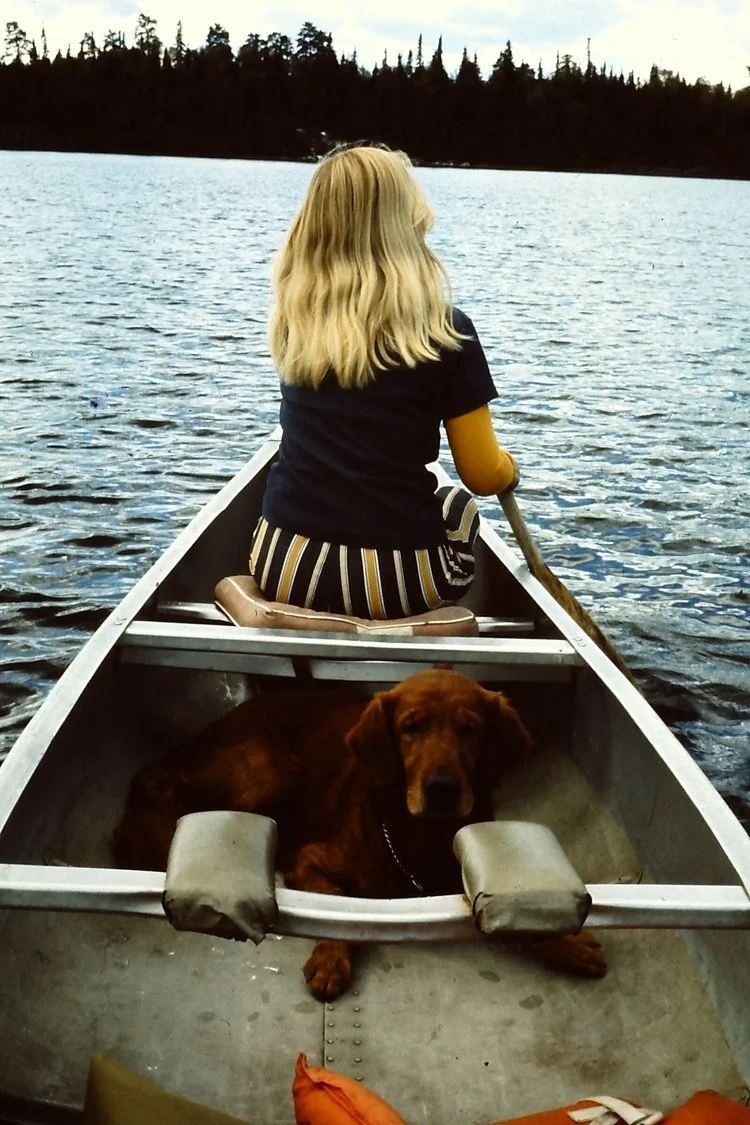Lessons in Sustainability
From Chicken N' Rice to Eco-Friendly Interiors
It was horrific news to my grade school ears: while our annual summer canoe expeditions would continue, Chicken N’ Rice was off the dinner menu! It hit me hard. What?!? There’d be no hot, soul-comforting Chicken N’ Rice to revive me after a day of paddling a canoe through cold, driving rain?
I was dumbstruck.
My parents explained that my favorite campsite dinner was being banished by the passage of the 1978 Boundary Waters Canoe Area Wilderness Act. In addition to restricting motorized vehicles and controlling the number of people visiting the area, the BWCAW Act meant we could no longer bring cans and glass bottles into canoe country. This meant that the canned, whole chicken required to make Chicken N’ Rice had to stay at home. To a young girl who had grown accustomed to certain rituals of camping adventures, this was no minor change.
Young Brita on a canoe trip in the Boundary Waters
But you see, my Chicken N’ Rice moment wasn’t about going hungry -it was my first conscious lesson in sustainability. That’s when I learned that we may have to sacrifice a bit in order to keep things right with the Earth - even if that meant no Chicken N’ Rice.
There’s beauty in simplicity
Our family's summer canoe adventures into the BWCAW persisted despite the lack of modern gear such as GoreTex and Polypropylene clothing. We relied on wool and cotton shirts, denim, and canvas sneakers, and used old tarps and plastic rain ponchos to stay dry. We had no electricity, GPS, or cell phones, only a tent, flashlight, matches, and a fold-out map. Yet, the rewards of our rustic approach were immeasurable, as we experienced the incredible beauty and intimate connection with nature that comes with simplifying our lives. It's an experience that is truly priceless.
As an interior designer, sustainability is more than just a buzzword to me. It's a way of life, a philosophy that guides my creative process. My passion for sustainability was born during my canoe adventures, where I learned the value of living with less. Living in the wilderness, I discovered that I didn't need the modern comforts of home to feel content. Instead, I found endless beauty in the natural world around me.
Today, my commitment to sustainability remains deeply ingrained in my creative process. I believe that a sustainable design approach involves working with nature rather than against it. It means incorporating materials and techniques that are environmentally friendly, ethically sourced, and of high quality. It means designing spaces that are not only aesthetically pleasing but also functional and efficient - interiors that nurture us in Mind, Body, and Soul.
Limitation fuels creativity
This is something I know this to be true, and it gives me hope: limitations can actually fuel creativity! When working with limited resources, I'm inspired to think outside of the box and come up with creative solutions. This is especially true when it comes to sustainable design, where finding eco-friendly solutions often requires creative problem-solving. As a result, I find that my most beautiful and livable designs are often the ones that were created within limitations.
Ultimately, sustainable design is about finding a balance between our needs and the needs of the planet. By working within these limitations, we can create beautiful, functional spaces that are in harmony with nature. And, just like my canoe adventures taught me, we can learn to make a home anywhere by living simply and sustainably.
Ready to incorporate sustainable design practices into your home? Schedule a free Discovery Call with Artistry to discuss your vision and goals. From eco-friendly updates to full scale design, Artistry is your guide! Let's work together to create a beautiful, livable space that's in harmony with our nature.

